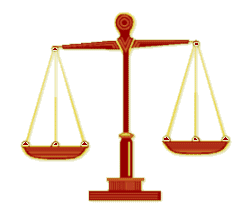Judicial interpretation facts for kids
Judicial interpretation is how judges figure out what laws mean. It's like when you read a rule and need to understand exactly how it applies. In countries that use Common law, judges often look at past court decisions to help them. These past decisions are called "case law." They act like guides for new cases.
When judges interpret the constitution, they use different methods. Here are some of them:
Contents
Reading the Exact Words
This method is called Textualism or Literalism. Judges focus mainly on the actual words of the law or the constitution. They believe the words themselves show the true meaning. Sometimes, this can be tricky if the words are not very clear.
Sticking to What's Written
Strict constructionism means a judge interprets the law exactly as it is written. Once they find a clear meaning, they don't look for hidden messages. Judges using this method try to avoid guessing what lawmakers might have meant. They stick to only what was said or written.
What the Lawmakers Meant
Founders' Intent (also called original intent) is when judges try to understand what the people who wrote the constitution wanted. They look at what the "Founders" or "Framers" intended. It can be hard to know exactly what these people thought, especially with old documents.
Going Back to Original Meanings
Originalism is similar to Founders' Intent. Judges try to apply the first meanings of different parts of the constitution. They want to understand how the words were understood when they were first written.
Weighing Different Rights
Balancing is when judges compare two different ideas or rights. They weigh one set of interests against another. This method is often used in cases about the First Amendment, which protects things like freedom of speech.
Being Careful with New Rules
Prudentialism encourages judges to be careful. It suggests they should not create big, new rules that might affect many future cases. This method advises courts to play a smaller role in making broad changes.
How Courts Shaped the Law
Doctrinalism looks at how the constitution has been shaped over time by the courts themselves. Judges consider how past court decisions have influenced the meaning of different parts of the constitution.
Learning from Past Cases
Precedent is a very common way judges decide cases. They look for a similar case that was decided before. They then use the rule or idea from that older case to help them decide the new one. It's like using a past example as a guide.
Understanding Laws in the Big Picture
Structuralism is a method where judges find the meaning of a part of the constitution by looking at the whole document. They try to understand how one part fits in with all the other parts. It's like putting together a puzzle to see the full picture.
See also
 In Spanish: Interpretación judicial para niños
In Spanish: Interpretación judicial para niños


